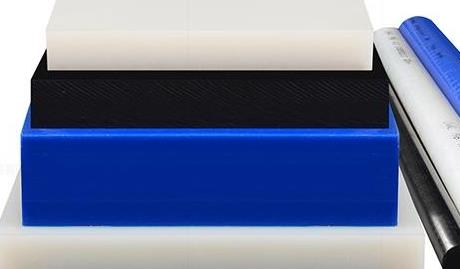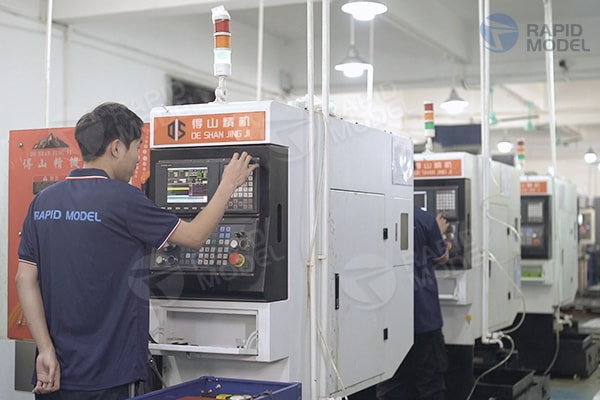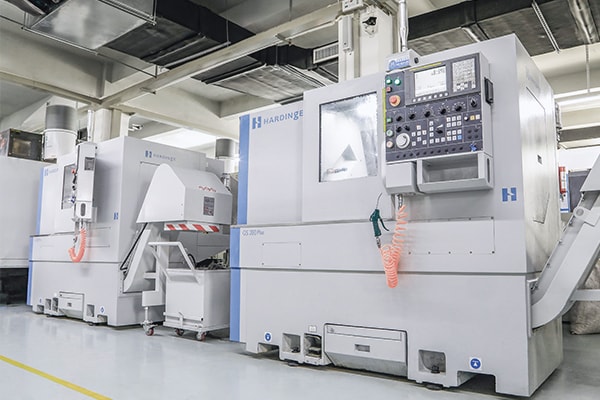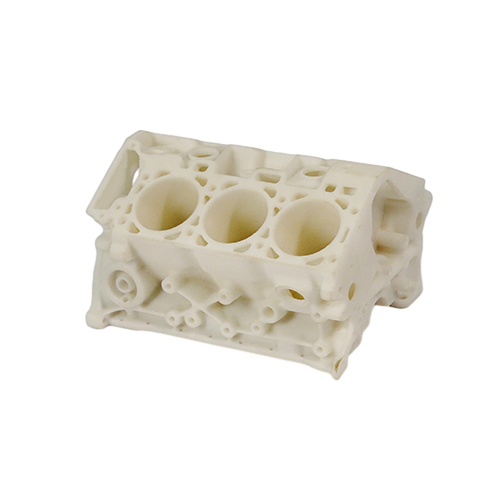In today's hyper-competitive landscape, getting your innovative product to market first isn't just an advantage—it's survival. Yet, the path from brilliant idea to successful launch is riddled with obstacles: unforeseen design flaws, skyrocketing tooling costs, painfully slow feedback cycles, and shrinking market windows. A single delay can turn a market leader into an also-ran.
Winning the Race to Market with Rapid, Reliable Prototypes
The antidote? Rapid, precise prototyping that simultaneously slashes time and mitigates risk. While 3D printing grabs headlines, Computer Numerical Control (CNC) machining emerges as the unsung hero for innovators needing functional, production-representative parts fast. CNC prototyping isn't just about making a model; it's about validating your design under real-world conditions, accelerating iterations, and making confident, data-driven decisions long before committing to expensive tooling.
Think of CNC prototyping as your built-in product development accelerator and risk mitigation insurance policy. This article dives deep into why CNC is the go-to choice for serious hardware teams aiming to dominate their market by launching faster and smarter.
What is CNC Prototyping?
CNC prototyping utilizes computer-controlled mills, lathes, or multi-axis machining centers to meticulously carve parts directly from solid blocks of metal, plastic, or composite materials. Guided by precise digital instructions (G-code), the cutting tools remove material layer by layer, resulting in parts that are:
- Fully Dense & Structurally Sound: No porosity or layering weaknesses.
- Production-Representative: Made from the exact materials intended for final use.
- High-Precision & Fine-Finished: Ready for functional testing and even presentation.
CNC Prototyping: Unmatched Precision & Real-Material Fidelity
Real Materials, Real Performance Testing
- Why it Matters: You can't accurately test thermal performance, structural integrity, chemical resistance, fatigue life, or weight characteristics with a material that only looks similar.
- CNC Advantage: Choose from a vast library of engineering-grade materials: Aluminum (6061, 7075), Stainless Steels (303, 304, 316L), Titanium, Brass, Copper, PEEK, Ultem, Acetal (Delrin), Nylon, ABS, Polycarbonate, and many composites. Test exactly what you'll ship.

Unmatched Precision & Superior Surface Finishes
- Why it Matters: Tight tolerances ensure parts fit and function correctly together. Smooth finishes reduce friction, improve aesthetics, and are often assembly-ready.
- CNC Advantage: Modern CNC machines routinely achieve tolerances of ±0.005 mm (0.0002") or better. Surfaces can be machined to a near-mirror polish, textured, or left with a standard "as-machined" finish suitable for immediate functional assembly or aesthetic review. This eliminates post-processing delays common with other methods.
Handling Complex Geometry with Production-Ready Methods
- Why it Matters: Complex designs need validation using the same manufacturing principles as mass production to uncover hidden manufacturability issues (DFM).
- CNC Advantage: 5-axis CNC machining can create intricate features like deep cavities, undercuts, complex curves, thin walls, and precise internal channels – capabilities that rival additive manufacturing, but using subtractive methods inherent to volume production. This bridges the gap between prototype and production seamlessly.

Who Benefits Most from CNC Prototyping?
- Teams needing functional testing under load, stress, or environmental conditions.
- Products requiring harsh-environment validation (heat, cold, chemicals, UV).
- Applications demanding regulatory compliance testing (medical, aerospace, automotive) on final materials.
- Projects where marketing-level appearance and feel are crucial for early feedback or investor pitches.
- Companies planning bridge tooling or low-volume production runs directly from CNC machining.
Why CNC Prototyping is the Strategic Choice for Faster, Smarter Development
1. Dramatically Reduce Time-to-Validation (Beat the Clock):
Traditional Tooling Bottleneck: Each design iteration requiring a new injection mold or die cast tool can take 6-12 weeks (or more!).
CNC Speed Advantage: Complex CNC prototypes can typically be delivered in 3-7 days. Simple parts often in 1-3 days.
Impact: This radically compressed feedback loop allows you to explore multiple design variations, identify and fix issues, and gather user feedback while competitors are still waiting for their first mold samples. Speed is the ultimate competitive weapon.
2. Slash Development Risk and Cost (Protect Your Budget):
- Uncover Flaws Early: Physical CNC prototypes expose critical issues like thermal expansion/warping, interference fits, stress concentrations, weak structural ribs, or fluid/gas leaks before they become catastrophic (and costly) failures in production or the field.
- Delay or Eliminate Costly Tooling Mistakes: An injection mold can cost $10,000 - $500,000+. CNC allows you to refine your design to perfection before committing to tooling. Build the mold once, correctly, only when the design is fully validated. This avoids costly mold modifications or complete scrap. (Keywords: avoid tooling costs, injection mold savings)
- Optimize for Manufacturability (DFM): Machining a prototype reveals potential production headaches hidden in CAD: insufficient draft angles, inaccessible areas for machining/casting, overly thin walls prone to breakage, or challenging assembly sequences. Fix these DFM issues early when changes are cheap and easy. (Keywords: design for manufacturability, DFM feedback)

3. Enable True Functional & Performance Testing (Confidence from Day One):
- CNC Advantage: Because CNC prototypes are made from real end-use materials, you can subject them to rigorous, representative tests.
- Structural: Tensile, compression, fatigue, drop tests.
- Environmental: Thermal cycling, chemical exposure, fluid pressure/flow tests (seals, valves, manifolds), UV resistance.
- Aesthetic & Ergonomics: User handling studies, fit and finish assessment
- Regulatory: Biocompatibility (medical), flammability, material certifications.
- Why Simulations Aren't Enough: While valuable, simulations have limitations. Nothing beats real-world physical testing.
4. Unlock Broad Material Choice & Certification Readiness:
- Match Final Spec Exactly: Select the precise alloy, polymer grade, or composite formulation planned for production.
- Streamline Certification: Having test data generated on parts made from the certified production material significantly accelerates regulatory approvals (FDA, FAA, etc.). (Keywords: prototype material selection, medical device prototyping, aerospace prototyping)
Real-World Impact: CNC Prototyping Slashes Time-to-Market
Scenario: A European MedTech startup developing a handheld point-of-care diagnostic device for hospitals.
Challenges:
- Complex internal microfluidic channels requiring leak-proof integrity under pressure.
- Ergonomic housing contours for clinician comfort during extended use.
- Housing material must withstand daily disinfection with aggressive chemicals (biocompatibility required).
- Device needed to survive accidental drops.
Traditional Path Risk: Designing molds for complex fluidics and ergonomic housings upfront would be costly and risky. Iterations would be slow and expensive.
CNC Prototyping Solution:
- Week 1: Machined aluminum core prototypes to rigorously test microfluidic channel geometry, sealing surfaces (O-ring grooves), and pressure integrity. Identified a critical leak path at an internal junction.
- Week 2: Incorporated design tweaks and machined housings from medical-grade PEEK. Tested for biocompatibility, chemical resistance to disinfectants, and ergonomic feel with clinicians. Feedback led to a 15% profile slimming for better grip.
- Week 3: Produced stainless-steel functional prototypes of critical internal components for destructive drop testing and final validation.
Results:
- $50,000+ Saved: The critical leak was found and fixed before any tooling was ordered.
- 8 Weeks Gained: Avoiding mold revisions and retesting accelerated the schedule dramatically.
- Superior User Experience: Ergonomic refinements based on real clinician feedback.
- 25% Faster Entry into Clinical Trials: Pre-clinical safety checks were completed faster using certified material prototypes.
- Market Confidence: Launched a robust, validated product significantly ahead of schedule.
The Lesson: CNC prototyping delivers speed plus data-driven confidence, creating the shortest, safest, and most cost-effective route to market for complex hardware.
Choosing the Right CNC Prototyping Partner: Keys to Your Success
Not all CNC shops are created equal for rapid prototyping. Partner with a provider that understands the unique demands of development speed and design iteration. Look for:
Deep Engineering & DFM Expertise:
They should proactively speak Design for Manufacturability (DFM). Look for partners who review your files not just for machinability, but
to optimize them – suggesting fillet radii, wall thickness adjustments, tolerance relaxation where possible, and identifying potential assembly or
future production issues. This upfront feedback saves immense time and cost downstream.
Uncompromising Speed & Responsive Communication:
- Rapid Quoting: Expect clear, detailed quotes within 24 hours.
- Transparent Process: Look for providers offering regular progress updates (photos/videos) and accessible communication channels (chat, email, phone) during your core business hours. Time zone alignment matters.
Rigorous Quality Systems & Certifications:
- ISO 9001 is a baseline for quality management.
- Industry-Specific Certs are Critical: Demand ISO 13485 for medical devices, AS9100 / ISO 17025 for aerospace/defense, or IATF 16949 for automotive. Don't just take their word – ask to see relevant certs and understand their inspection processes (CMM reports, gauge calibration records).
Advanced Equipment & Material On-Hand:
- Technology: Ensure they have modern 3-axis, 4-axis, and 5-axis CNC mills, CNC lathes, and potentially multi-tasking (mill-turn) centers to handle complexity.
- In-House Finishing: Capabilities like anodizing, plating, painting, laser marking, or polishing under one roof drastically reduce lead times.
- Material Stock: A provider holding extensive inventory of common metals and plastics means your project starts immediately, avoiding material procurement delays.

Make CNC Prototyping Your Innovation Accelerator
In the relentless race to market, CNC prototyping stands out as a critical enabler for hardware innovators. It delivers an unparalleled combination of speed, precision, real-world material performance, and seamless transition to production.
By enabling rapid iteration with functional parts, uncovering costly flaws early, and providing the confidence to make decisive design choices, CNC prototyping dramatically reduces time-to-market and development risk. It transforms uncertainty into actionable data and turns complex designs into market-ready products faster and smarter.
Don't let slow prototyping or unreliable models delay your success. Leverage the power of CNC to accelerate your innovation journey.
Ready to Launch Your Product Faster & Smarter?



